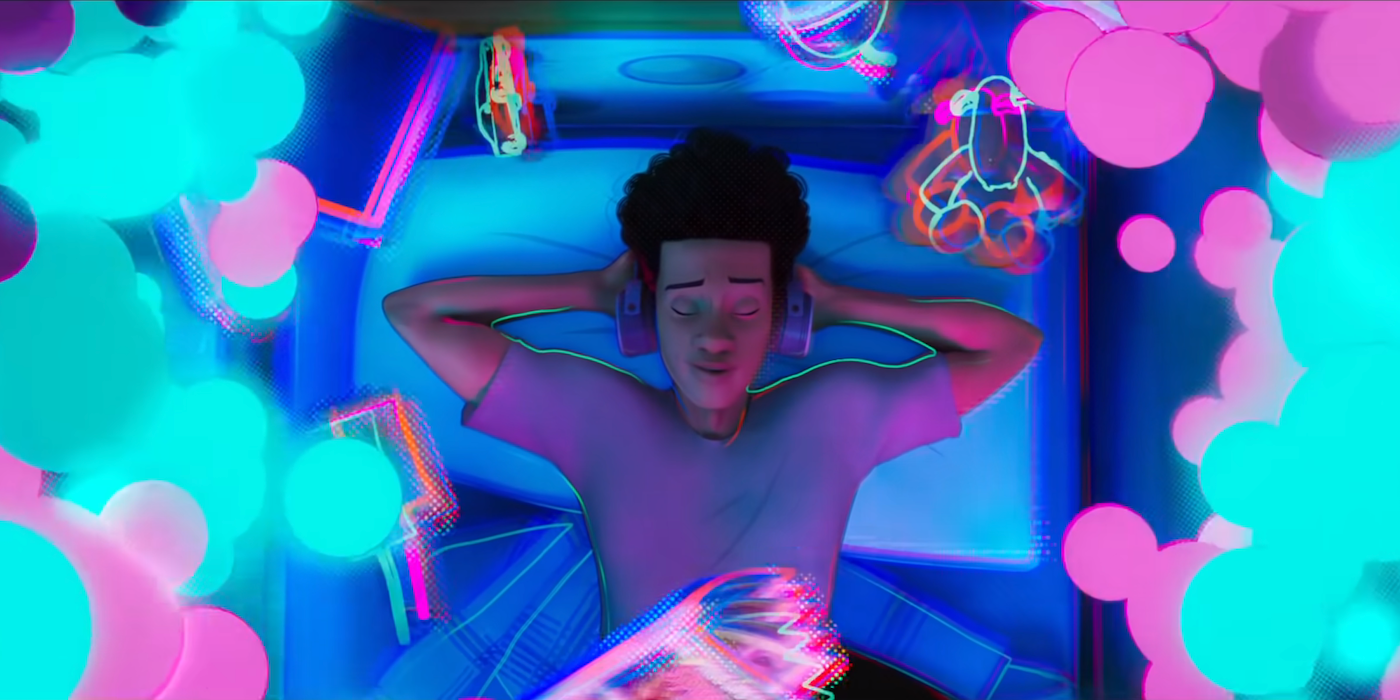For Phil Lord and Christopher Miller, the animation techniques behind Spider-Man: Across the Spider-Verse (Part One) owe their success to lessons learned developing The Mitchells vs. the Machines' characters.
Speaking to IndieWire, Lord and Miller talked about The Mitchells vs. the Machines director Mike Rianda's desire to eschew a "hyper-realistic" visual style in favor of something more unique, but also emblematic of the titular Mitchell family's dysfunctionality. "It doesn't have to have realistic pupils, the homes don't have to look like showrooms, but messy and lived in," Miller stated. "They could feel homemade and like watercolor illustrations." Miller also attributed the film's success to the "handmade wobbly analog look" created by The Mitchells' production designer Lindsey Olivares, which he described as "hard to teach a computer how to do."
"Lindsey's artwork emphasizes your imperfections, things about yourself you want to cover up, like bigger ears," Lord continued. "She celebrated the individuality of the characters instead of trying to shave off those things. We have a movie where that choice has been made over and over again, taking the little things that make people wonderful."
The filmmaking duo then discussed the ways in which The Mitchells adapted certain performances to animated form, particularly Olivia Coleman as the evil AI PAL, and how the animation contrasted her setting against that of Katie Mitchell and her family. On how this approach influenced Across the Spider-Verse, Lord noted that "It's been fun to have the confidence to go even harder and push the medium even further and take Miles [Morales] to places you couldn't imagine."
Released on Netflix in April 2021, The Mitchells vs. the Machines received critical acclaim and quickly becoming the streaming service's most watched animated film of all time. The movie follows aspiring teen filmmaker Katie and her family -- father Rick, mother Linda, daughter Katie, son Aaron and pug Monchi -- as they take a road trip to Katie's film school per Rick's decision. During the trip, however, a machine apocalypse unwittingly caused by tech inventor Mark Bowman (Eric André) leads to every human getting imprisoned but the Mitchells, thanks to Rick's tech-aversive nature, forcing the family to become Earth's unlikely saviors. While not connected to the Spider-Verse films, Rianda previously admitted that he almost inserted a "disheveled lumpy Spider-Man" similar to Spider-Verse's Peter B. Parker in one shot, but this idea never went through.
Co-written and co-produced by Lord and Miller, Spider-Man: Across the Spider-Verse (Part One), a follow-up to the Oscar-winning Spider-Man: Into the Spider-Verse, dropped its first trailer in December, which showed Miles Morales reuniting with Gwen Stacy's Spider-Woman and getting into a multidimensional fight with Spider-Man 2099. As its title implies, the story consists of two sequels being animated simultaneously and will not only take Miles across a number of worlds, but give each world its own distinct art style. Aside from Miles, Gwen and Peter B., Across the Spider-Verse will introduce new Spider-characters like Jessica Drew/Spider-Woman, played by Insecure's Issa Rae.
Spider-Man: Across the Spider-Verse (Part One) arrives in theaters Oct. 7, 2022, with Part Two releasing in 2023.
Source: IndieWire

